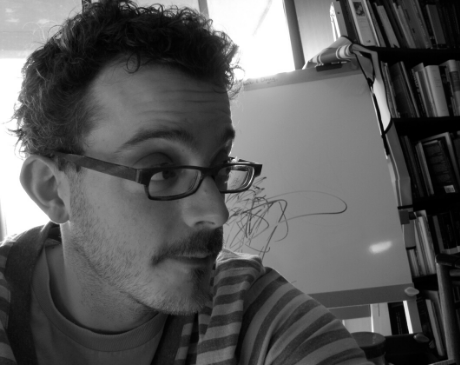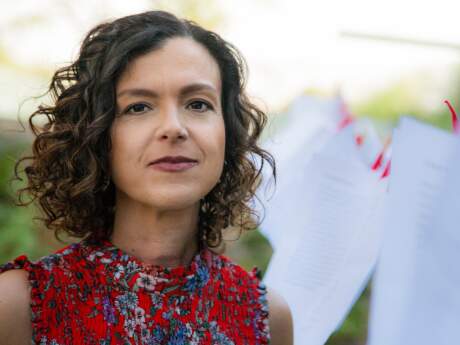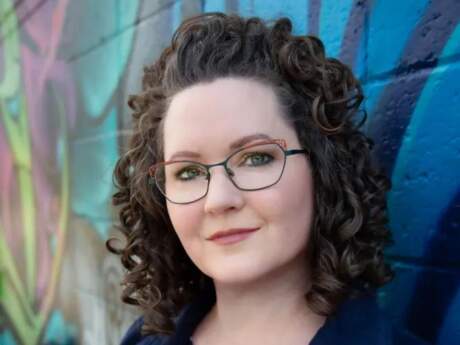In Their Own Words
Thomas Hummel's “And, not content with circumscription, spreads.”

And, not content with circumscription, spreads
Though I may not ever recognize the places
I have seen it, it is still an ornament, an ornament
known well; I know its name, I traced
those lines, and feel easy now about it. It looks
like this, though I don't mean that, I mean it's something
like that but with dimension, despite the way
I choose to draw it. A picture made of words
rejecting anything always shown to me. I do no
interpreting. And again, once more, allegiances
to structures dominate the field of structures and, again, less
rewarding spontaneities reign. A certain trend
toward rigidity predominates; asymmetrical
ornamentation, held as the naturally occurring
opposition to precision representation, ignores
altogether coherent rhythms. The movement to erase
whatever overlap exists between how we think
when we act and how we talk about it rests
in the shapes that I see I want to say are not
simply shapes; one shape seen is only ever all the shapes
I know; it is a shape marked in advance, a shape
I patterned in me, and because it corresponds
to such a self-pattern is it this familiar shape
methodized and represented in a group
of spatial objects; close, known, irregularly solid
solids, symmetrically figured; each, then, takes a shape
that elaborates in rearrangement its impression
on me, because it is the preperformance of a body
I am familiar with, because there are solution
lists and this, this bodied, is on one such list
because it represents a kind of object I am
familiar with. Because it gives an instantaneous
impression of relation, varied associations
carried in connection with it, I know what it is
called, I know I have seen it, and I know what it is
used for, and because I seem to be familiar
with it, a name occurs to me as its name and I tell
myself: of course. It represents, and may again, a face
familiar, recognized, in and of itself a face
I know and I, knowing, recognize the features seen
though I may not ever recognize its place.
On "And, not content with circumscription, spreads."
I imposed all that came after onto this.
The narrative accompaniment originally written to appear here bore no actual relationship to the poem's inception. The futility, the wherelessness, the overarching visuospatial dysgnosia of the poem, in conjunction with the task of tethering its construction to a particular temporal episode, convinced me that it had been written in the aftermath (or in the midst) of a series of traumas from which it took me nearly four years to emerge.
As it happens, the poem dates to a time of creative satisfaction. I was performing with Nature Theater of Oklahoma and awaiting the birth of my daughter.
That I would map later events onto the poem is almost painfully, embarrassingly obvious. And, given the poem's inability to navigate relational experience and the competing confidence and confusion of its unfolding, I should make clear that this isn't some kind of winking soft-shoe. It's a genuine enactment of the instability of instinctually conflating object and baggage.
As the penultimate poem in the first section of Letters & Buildings., it reads as a kind of footnote. It falls between two sparse, carved pieces; two poems involved with vacancy. "And, not content with circumscription, spreads." is an outburst between them, cyclical and rambling, the kind of moment that gets unleashed on unsuspecting listeners in moments when the depressive (read: me) is on an upswing. It also reinforces the idea (which recurs throughout the book) that selves and their machinations (vision, acceptance, apology, belief) parallel the spaces they inhabit in their contradictory convergence of malleability and stolid surety.
All of which is to say: the poem was written in winter. In Manhattan. Some time ago.


